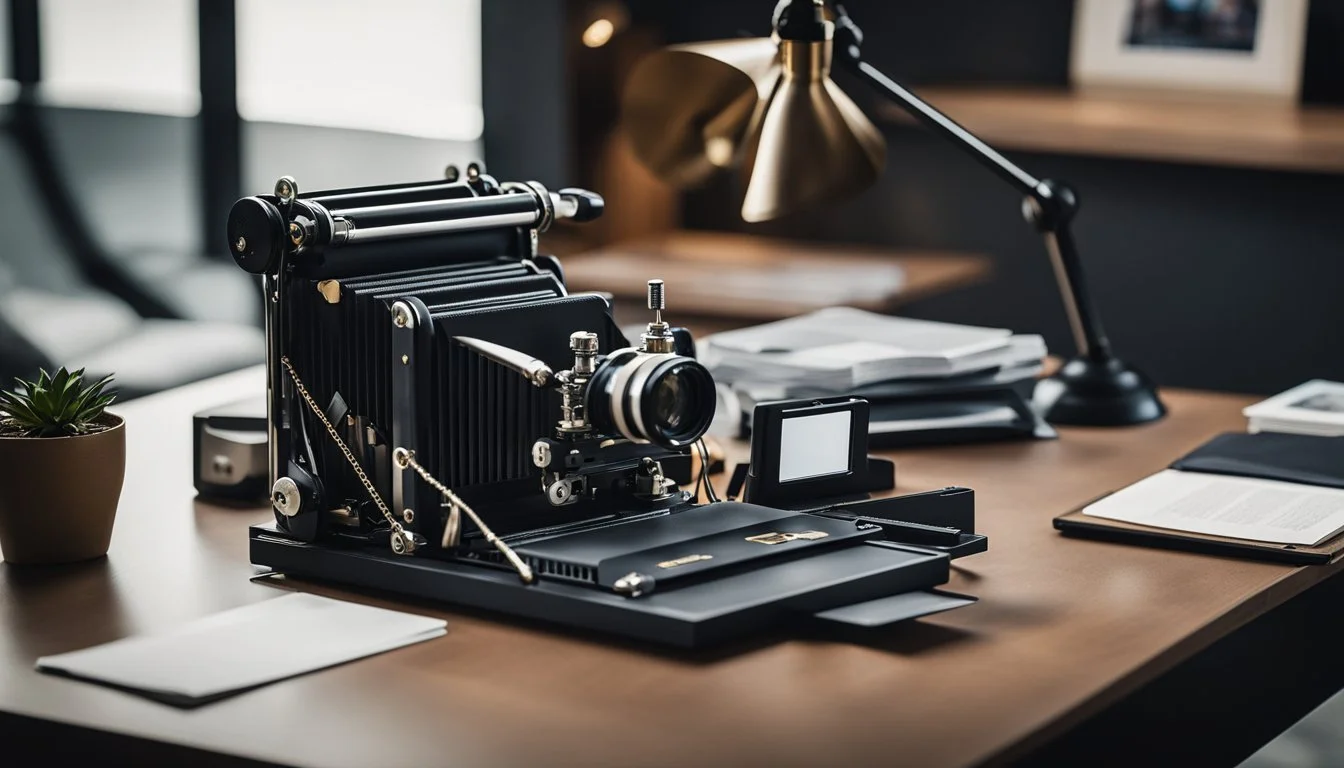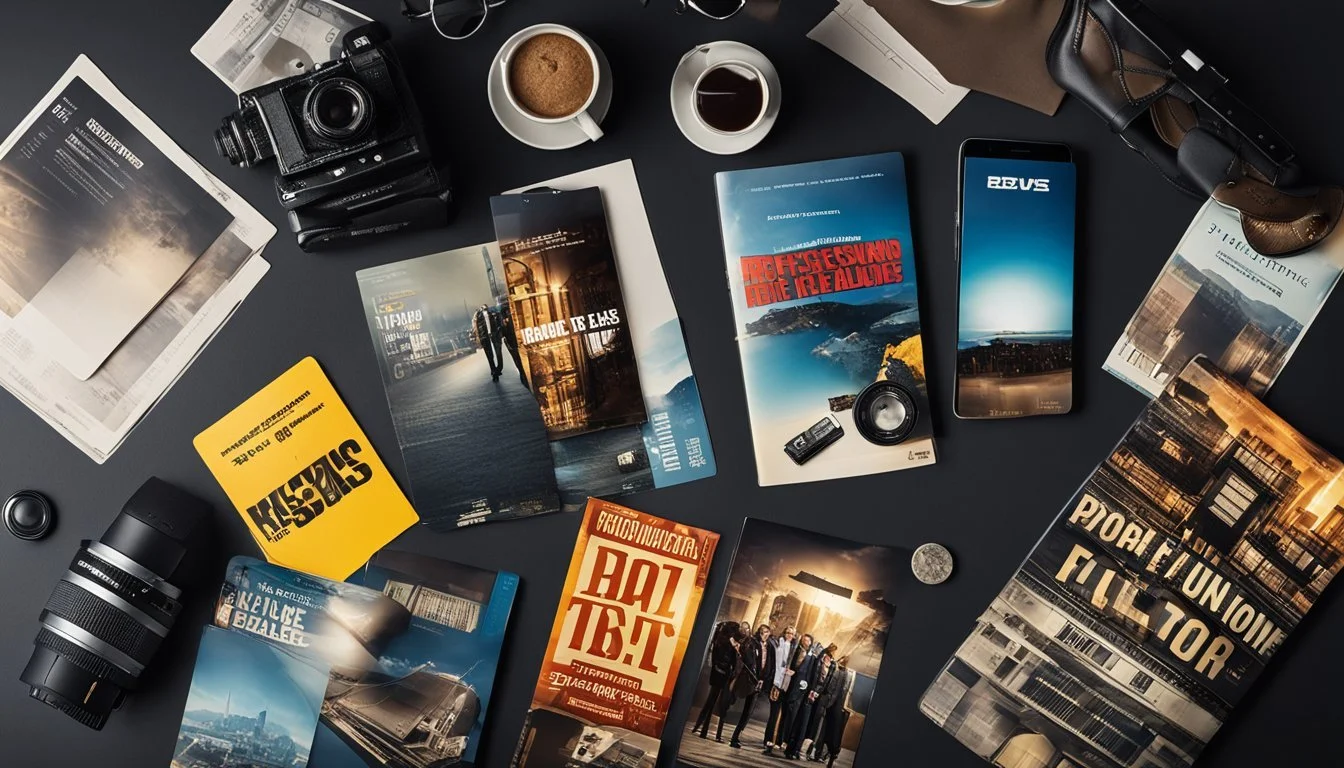5 Crucial Elements of a Compelling Film Press Kit
Key Components for Success
Creating an engaging and effective film press kit can be a game-changer for filmmakers looking to attract media attention and promote their movies. Crafting a press kit that stands out requires careful consideration and the inclusion of essential elements that present the film in the best possible light.
What makes a film press kit crucial is its ability to generate buzz and media coverage, ultimately influencing how the audience and industry professionals perceive the movie. A well-rounded press kit can set your project apart, making it a valuable tool in the competitive world of filmmaking.
1) Film Synopsis
A film synopsis serves as a concise summary that highlights the main storyline, key characters, and central themes of the movie. It is usually split into two forms: a short synopsis and a detailed synopsis.
A short synopsis should be between 100 to 200 words. It captures the essence of the film and is easy to digest quickly.
In contrast, a detailed synopsis delves into more specifics, offering a deeper insight into the plot and character arcs. This version helps journalists and potential viewers get a fuller picture of the film.
The synopsis must be engaging, providing just enough information to spark interest without giving away too much of the plot. This balance keeps the reader intrigued and wanting to learn more about the film.
A well-crafted synopsis is crucial because it is often the first impression that media and potential viewers will have of the film. Ensuring it is compelling and clear can significantly enhance the effectiveness of a press kit.
Attach the synopsis early in the press kit to immediately capture attention. This strategic placement helps set the tone and context for the rest of the materials.
2) Director's Statement
The director's statement offers a personal insight into the film from the director's perspective. It provides an opportunity for the director to share their vision, intentions, and the motivations behind the project.
This section should be concise yet impactful, giving readers a deeper understanding of the film's creative direction.
In a few paragraphs, the director can discuss the inspiration for the film, the themes explored, and any significant experiences during production. This narrative helps foster a stronger connection between the audience and the film, making viewers more invested in the story.
Incorporating a director's statement is crucial because it adds a human element to the press kit. It transforms raw data about the film into a relatable story, allowing journalists and critics to better appreciate the director's artistic choices.
A well-crafted director's statement can also provide context for the film's visual style, narrative structure, and character development. This added depth enriches the press kit, giving it more substance and appeal.
Directors should consider what aspects of their journey and vision will resonate most with their audience. This personal touch can make the press kit stand out, offering a unique glimpse into the mind of the filmmaker.
3) Cast and Crew Bios
Crafting detailed cast and crew bios is essential for any film press kit. These bios provide essential background information on the individuals who have contributed to the creation of the film.
Each bio should include the person's name, role in the film, and a brief summary of their career highlights.
Using concise language, highlight key achievements and any notable previous work. Including this information helps establish credibility and interest in your project.
Adding headshots can make the bios more personal and engaging. Ensure the photos are high resolution and professionally taken to maintain a professional appearance.
Incorporate filmography details for relevant cast and crew members. This can include past films, TV shows, or other projects they have worked on, which can underscore their experience and expertise.
When available, include notable awards or recognitions. This can add authority to your press kit and emphasize the talent associated with your film.
Keep the bios to a manageable length. Aim for around 100-150 words per bio to keep the content informative yet concise without overwhelming your audience. This concise presentation ensures that the essential information is easily accessible to the reader.
Focus on what makes each individual uniquely qualified for their role in the film. This approach helps paint a complete picture of the team behind your film.
4) High-Resolution Photos
High-resolution photos form a foundational pillar of an effective film press kit. These visuals allow media outlets to present your film in the best light possible, enhancing its visual appeal and professionalism.
Key scene stills are essential. They capture the essence of the film and provide a glimpse into its visual and emotional tone.
Behind-the-scenes shots offer a different perspective. These images can intrigue the audience by showcasing the filmmaking process, humanizing the production team, and highlighting the effort behind the scenes.
Official posters must also be included. They serve as the face of your movie, offering a striking visual representation that can be easily shared across various media platforms.
Make sure to provide a mix of landscape and portrait orientations. This gives media professionals flexibility in their layouts and enhances the usability of your assets.
All photos should be in high resolution. This ensures that they maintain their quality across different media formats, from print to digital. Low-resolution images can appear pixelated and unprofessional.
Consistent branding across all photos helps in creating a cohesive and recognizable promotional package. This can include maintaining a specific color palette, lighting style, or visual theme.
5) Press Release
A press release in a film press kit plays a pivotal role in communicating vital information about the film to the media.
It typically includes the film’s title, release date, and a brief summary of the plot.
Additionally, it mentions key cast and crew members.
Quotes from the director or lead actors can add a personal touch and enhance the press release’s impact.
The press release should be concise and well-structured.
Using clear and compelling language helps to capture the attention of journalists and editors.
Ensure that all essential details are included without overwhelming the reader with too much information.
It's important to keep it professional and free from grammatical errors.
Including contact information at the end assists media representatives in reaching out for further inquiries or interviews.
The press release serves as the first impression of the film, making it crucial to get it right.
Professional Bios
A compelling film press kit includes detailed professional bios that highlight the key players behind the movie. This section covers biographies for both the director and leading cast members, providing insight into their backgrounds and contributions.
Director's Biography
The director's biography should emphasize their vision, experiences, and previous work. This bio typically includes the following:
Name and credentials
Previous films or projects they've directed
Awards and recognitions received
Education background in filmmaking
Personal statement or quote that reflects their artistic vision
Highlight notable achievements and projects to establish credibility and engage media professionals. Including a personal touch can make the biography more relatable and memorable.
Lead Cast Biographies
Lead cast biographies should focus on their acting careers and notable performances. Key elements for each bio include:
Actor's name and credentials
Key roles and performances in previous films or series
Important awards and nominations
Training in acting or notable schools attended
Brief personal insights such as inspiration or favorite roles
Providing these details helps create a fuller picture of the cast and their relevance to the film. These bios are essential for drawing attention to the talent that brings the film to life.
Synopsis and Key Themes
A film press kit must provide a clear, concise summary of the film and explore its primary themes. These elements help journalists and media outlets understand and convey the film's essence to their audiences.
Film Synopsis
The film synopsis is a brief yet comprehensive summary of the movie. It outlines the central plot, introduces key characters, and highlights important events. A short synopsis should be kept within 100 to 200 words, emphasizing clarity and conciseness.
In addition, it is often beneficial to include a detailed synopsis for those who need more information. This helps maintain the reader’s interest and provides a quick understanding of the storyline.
Main Themes Explored
Identifying and explaining the main themes of a film is crucial. Themes are the underlying ideas or messages that the film conveys. They are often relatable, helping the audience connect with the film on a deeper level.
For instance, common themes might include love, loss, or redemption. Including these in your press kit ensures potential viewers grasp the emotional and intellectual experience the film offers. Clearly defining these themes can also spark interest and discussion around the film.
Visual and Media Assets
Effective visual and media assets can significantly boost a film's appeal to both distributors and media outlets. High-quality images and behind-the-scenes content play crucial roles in engaging audiences and media professionals.
High-Resolution Stills
High-resolution stills serve as vital promotional tools. These images should capture key scenes, characters, and moments of the film.
They are often used in press releases, articles, and promotional materials. High-quality stills should be at least 300 DPI to ensure they look sharp both in print and online. Include a variety of shots, such as wide shots that establish the setting and close-ups that convey emotions. Properly labeling each image with relevant information, such as the scene description and character names, can make it easier for media outlets to use them correctly.
Behind the Scenes Photos
Behind-the-scenes photos offer a unique glimpse into the filmmaking process. They humanize the production and create a deeper connection with the audience.
Include candid shots of actors interacting, directors working, and crew members setting up scenes. These images can show the hard work and creativity behind the film, which can be particularly appealing to fans and media. Ensure that these photos are also high-resolution and properly captioned with relevant details. This will make it easier for journalists and bloggers to use them in their articles, enhancing the overall promotional impact.





